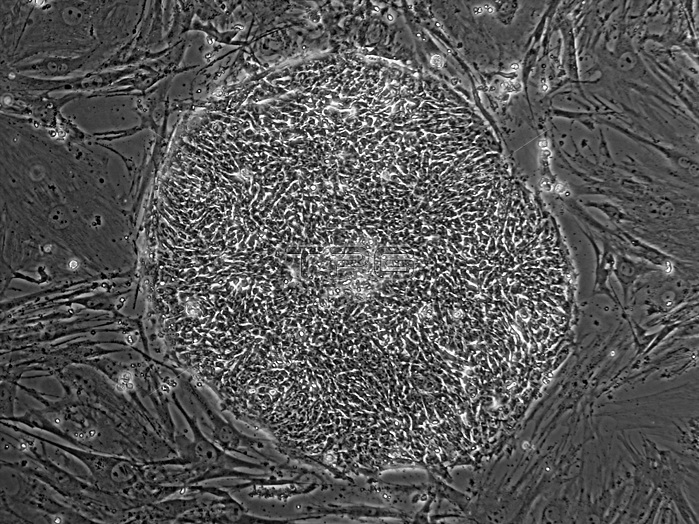
Human embryonic stem (ES) cell line. One of the original lines approved for NIH-funded research by President Bush in 2001. A stem cell line is a group of stem cells that is cultured in vitro and can be propagated indefinitely. Stem cell lines are derived from either animal or human tissues and come from one of three sources: embryonic stem cells, adult stem cells, or induced stem cells. Stem cells have the remarkable potential to develop into many different cell types in the body during early life and growth. In addition, in many tissues they serve as a sort of internal repair system, dividing essentially without limit to replenish other cells as long as the person or animal is still alive. When a stem cell divides, each new cell has the potential either to remain a stem cell or become another type of cell with a more specialized function, such as a muscle cell, a red blood cell, or a brain cell. Embryonic stem cells are derived from embryos. Most embryonic stem cells are derived from embryos that develop from eggs that have been fertilized in vitro - in an in vitro fertilization clinic - and then donated for research purposes with informed consent of the donors. They are not derived from eggs fertilized in a woman's body. Phase-contrast imaging is a method of imaging that has a range of different applications. It exploits differences in the refractive index of different materials to differentiate between structures under analysis.
| px | px | dpi | = | cm | x | cm | = | MB |
Details
Creative#:
TOP22234102
Source:
達志影像
Authorization Type:
RM
Release Information:
須由TPG 完整授權
Model Release:
N/A
Property Release:
No
Right to Privacy:
No
Same folder images:

 Loading
Loading